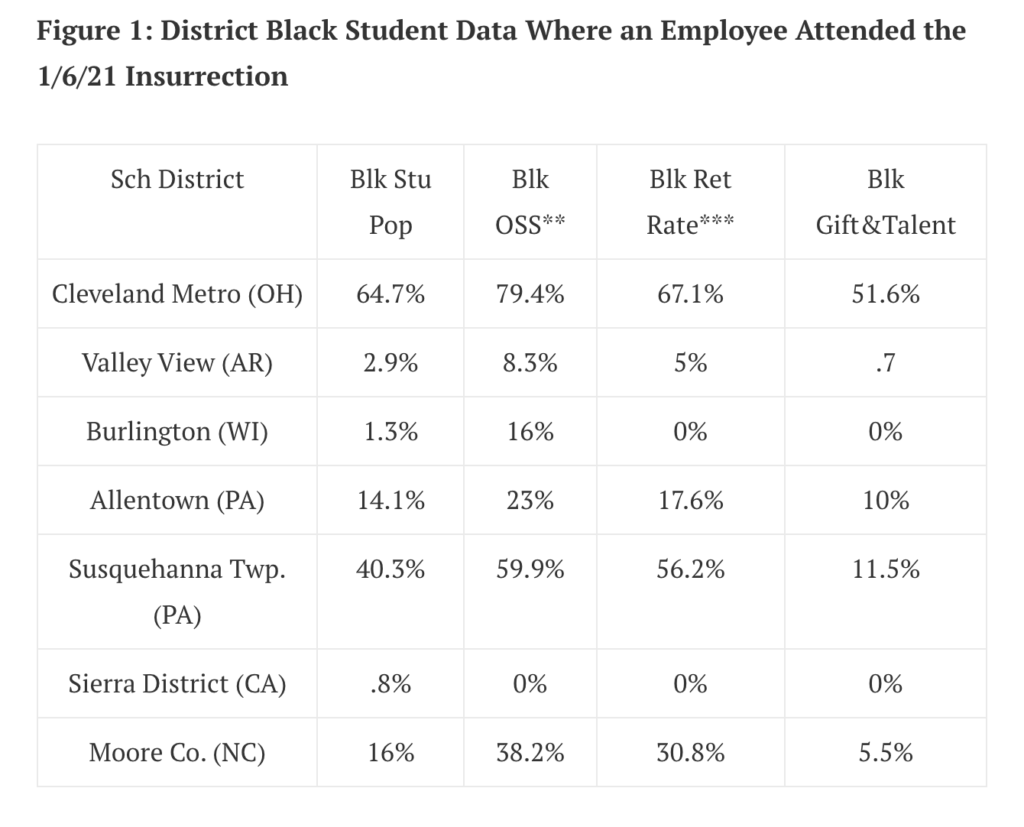
The insurrection of January 6, 2021 was a dark day in our nation’s history. What makes it even darker is that public servants took part in the dysfunction. In attendance that day were police officers, firefighters and even educators among our industry.
As it pertains to leaders in these industries, I applaud them for investigating and potentially removing these individuals. But these [pullquote]leaders should be equally concerned with rooting out the racists hiding in plain sight in offices, patrolling the streets and teaching in classrooms.[/pullquote]
The onus for doing so is within police departments; for Black people, removing racists from the rank and file is a matter of life and death. The same can be said for removing racists in schools.
While it’s reasonable to register that a large number of insurrectionists in attendance weren’t educators, it doesn’t mean there isn’t a fair population of educators who agree with their cause, or worse; are racists.
Look no further than Facebook.
Roughly 60% of white people voted for Donald Trump. White people are least likely to say that the presidential election was well conducted and least likely to think that votes were counted accurately. It can’t be ignored considering white teachers account for 80% of teachers nationwide.
This isn’t to say that all white teachers support the notion that the election was rigged, but it is to say that some white teachers may believe that. Some are just clever enough not to post their thoughts on social media or be visible in public while voicing their sentiments—but it most certainly will inform their pedagogical and instructional decisions.
Around the country, educators who attended or participated in the insurrection have faced investigations and even suspensions by their school district—and they should. However, those folks are easy to single out.
But what about the racist and bigoted educators who didn’t attend or participate in the insurrection; racist employees, who hide in plain sight?

If we consider the track record of schools where an employee attended the insurrection, we find that Black students in just about all of them are disproportionately suspended, retained, and are underrepresented in gifted and talented courses (see figure 1).
We can’t lay blame for these statistics squarely with those educators who attended the insurrection. However, there is something to be said for a school’s climate whereby at the very least concern about the optics wasn’t enough to deter an educator from traveling to Washington D.C. to protest a fair election.
From the stories and the stats, [pullquote]we can sound the alarm of systemic racism upheld and perpetuated by the adults in those school districts—knowingly or unknowingly.[/pullquote] Investigating, suspending or removing employees due to their participation on January 6 may look like your district doesn’t tolerate racism.
But the data tells a different story altogether.
It’s not enough to root out racists educators when they’re found out. You must root them out without knowing who they are.
That happens by making any racist and white supremacists uncomfortable within your district. Here is how that can happen:
This is what racial justice work looks like. It is no coincidence that these actions, when taken, will frustrate those who believe that schools should remain white institutional spaces; whereby Black and brown students and educators should simply be tolerated and be grateful for their “inclusion.”
None of these actions are guaranteed to remove racists hiding in plain sight; certainly not done in isolation of the others. However, if done together, [pullquote]school leaders can cultivate the sort of culture that can make an educator that is racist uncomfortable enough to not seek employment or leave if already employed.[/pullquote]
I understand the natural inclination to unite rather than divide and these tactics may seem divisive for some. The hope, of course, is that the racists within any district be converted. However, educators must teach students that being a person of character and integrity means something.
Educators must be the model for standing up for what’s right and call out what’s wrong. If not, then what are we here for?
Rann Miller is a director of a federally funded after-school and summer program in southern New Jersey. He spent six years teaching in charter schools in Camden, New Jersey. Rann is the creator, writer and editor of the Official Urban Education Mixtape Blog. His writing on race and urban education has appeared in Salon, AlterNet, and the Progressive, where he is an education fellow.
If you have a child with disabilities, you’re not alone: According to the latest data, over 7 million American schoolchildren — 14% of all students ages 3-21 — are classified as eligible for special...
The fight for educational equity has never been just about schools. The real North Star for this work is providing opportunities for each child to thrive into adulthood. This means that our advocacy...
The story you tell yourself about your own math ability tends to become true. This isn’t some Oprah aphorism about attracting what you want from the universe. Well, I guess it kind of is, but...
Your donations support the voices who challenge decision makers to provide the learning opportunities all children need to thrive.
Ed Post is the flagship website platform of brightbeam, a 501(c3) network of education activists and influencers demanding a better education and a brighter future for every child.
© 2020–2024 brightbeam. All rights reserved.